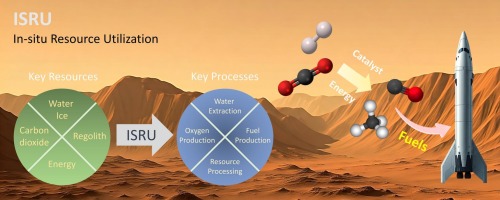
Commercially accessible magnets could greatly enhance water splitting efficiency in a microgravity setting. Such devices would be utilized to provide astronauts with oxygen during extended missions, although they exhibit reduced effectiveness in low gravity. The international research team from the US, UK, and Germany that made this finding also created two proof-of-concept devices which they assert could be applied in future space missions following additional testing in low gravity conditions.
Providing astronauts with a steady and reliable source of oxygen during deep space missions has posed a challenge since the inception of space exploration back in the 1960s. Presently, in microgravity settings, oxygen is generated through electrochemical water-splitting, a process that necessitates complicated mechanical components and a considerable amount of energy. The situation is further complicated due to the fact that in the zero-gravity environment of microgravity, gas bubbles do not rise as they do on Earth but tend to adhere to the electrode’s surface, hindering the reaction.
Bringing Mars within reach
To tackle these issues, the team aimed to design electrochemical cells to streamline the oxygen generation process in space. “For a Mars transit mission, the dependability of the oxygen generating system… isn’t sufficient for a prolonged mission,” elaborates Álvaro Romero-Calvo, an aerospace engineer at the Georgia Institute of Technology and team member. “The challenge lies in the numerous moving parts, centrifuges, pumps, and hydrogen sensors in a closed-loop operating in diminished gravity, as all these extra components contribute significant weight to your system.”
By integrating off-the-shelf neodymium magnets into electrolysis devices, the team devised a passive phase separation system that propelled the bubbles away from the electrodes and gathered them at strategic locations. Romero-Calvo states that their research showcases two primary forces: diamagnetic force and magnetohydrodynamics. The magnetohydrodynamic effect enhances the detachment of gas bubbles from the electrode’s surface, causing them to rotate, while the diamagnetic effect directs the gas bubbles toward specific collection areas.
“Our main objective is to separate gas bubbles – oxygen and hydrogen – from the water or the electrolyte, without any moving parts, centrifuges, or pumps,” notes Romero-Calvo.
To examine the effects of these forces, the researchers employed a drop tower to create short durations of microgravity during free fall, totaling 9.3 seconds. Through this method, they discovered that magnet-enhanced water electrolysis yielded current density improvements of up to 240% in microgravity, as opposed to electrolysis devices without magnets.
To harness these effects, the researchers built two straightforward proof-of-concept devices – one a proton-exchange membrane electrolyser cell employing diamagnetic forces for effective oxygen and hydrogen gas collection, and the other a magnetohydrodynamic drive cell facilitating vortical gas-liquid phase separation. In microgravity, these devices attained water splitting efficiency near that achievable on Earth.
“The aim of these two proof-of-concept devices is, can we enable gas separation in microgravity to generate oxygen and segregate it within a single device… in a very straightforward manner?” remarks Romero-Calvo.
Extended testing
The team is currently focused on evaluating the system’s long-term performance. “We require long-term microgravity conditions, either through a suborbital rocket, which we will launch in the near future, or through orbital experiments,” he adds. “The second aspect is that many advancements at the electrode or cell level … function exceptionally well in a small cell, but when adapted for astronauts over six months, it doesn’t perform as well. Therefore, scaling up is another area we’re addressing.”
Mark Symes, an electrochemist at the University of Glasgow, characterized the work as “super cool” and “a tour de force” for conducting electrolysis under challenging conditions. “Electrolysis in space is a tremendous concern, especially for establishing a semi-permanent base on the moon or Mars, as transporting oxygen back and forth from Earth endlessly isn’t feasible,” he explains.
“What’s particularly impressive about this magnetic approach is the absence of moving parts; you simply have a standard electrolyser augmented by a magnet. Essentially, the magnetic field generates convection and a form of vibration that displaces these bubbles before they expand too much.”
However, Symes expressed that he had several inquiries regarding the research. “I didn’t notice, at least in the primary paper, that they assessed the purity of those gases, which is clearly an essential measurement; ensuring quality is paramount.”